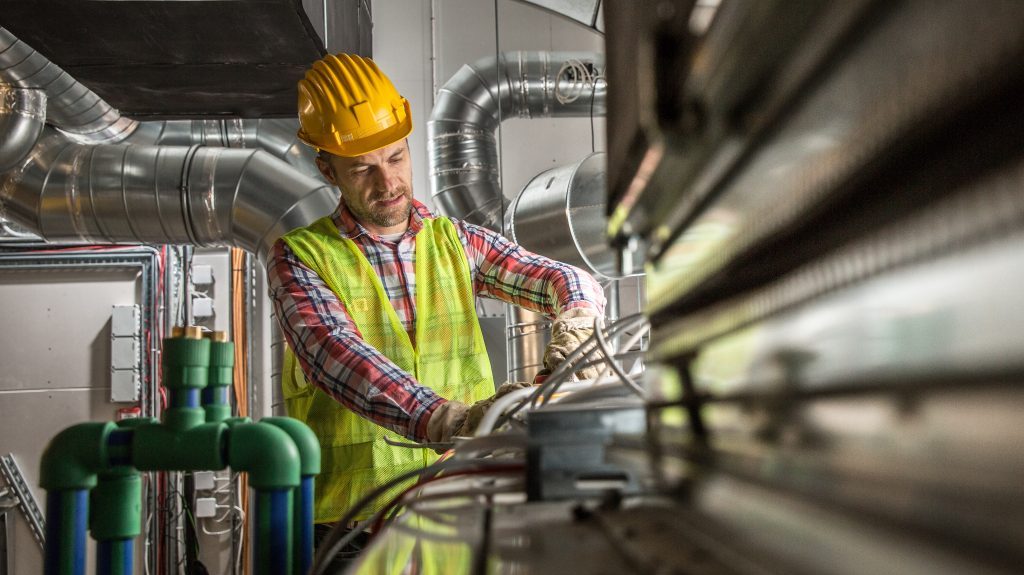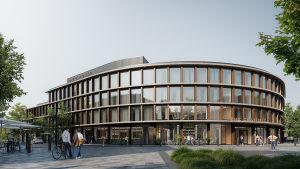Unionized mechanical contractors in Hamilton/Niagara, Ont. were hit hard by the pandemic last year but the Mechanical Contractors Association of Hamilton Niagara (MCAHN) is predicting a return to near normal in 2021.
MCAHN president Greg Crawford said the association is forecasting a return to almost 80 per cent of pre-COVID hours in 2021 following a reduction in working hours to approximately 65 per cent of regular levels in 2020.
MCAHN includes unionized mechanical contractors in the Hamilton, Niagara, Halton, Brant, Haldimand and Norfolk regions.
The 2020 slowdown was not only due to some projects being delayed as non-essential during lockdowns last year but it was also a byproduct of other factors such as large employers like the Nanticoke refinery holding off construction activities as the price of oil plummeted and the erosion of union turf in some parts of the territory, Crawford said.
He explained late 2019 was particularly strong for the sector with contractors working long hours on projects, and that strength was expected to continue into 2020 until the pandemic hit.
“Comparing 2020 to 2019, we thought we’d get to 95 per cent of the hours,” he said. “Actually, we got to 65 per cent. It was a huge hit. So now, when you’re back at 80 per cent, it’s encouraging.”
MCAHN members often work in spurts, Crawford explained, such as when there is a lot of work to do during scheduled maintenance at Hamilton steel plants. Crews work 10 or 12 hours a day, seven days a week during those periods.
“So what 80 per cent says to us is that we can provide our workers with not necessarily the volume of work that they’re used to but I think now coming out of COVID, if you could tell most people that they get 40 hours a week for the foreseeable future, I’m pretty sure most people would be happy with that,” he said.
The region covered by MCAHN is diverse with Hamilton providing lots of work but the Niagara mechanical sector — MCAHN uses uniquely unionized workers, members of UA Local 67 — experiencing more difficult times in the past few years, Crawford said.
“Niagara itself has had a declining market in recent years,” he said. “There are still some large companies down here that predominantly use unionized labour. Non-union interests have really made a mark down here and we’re losing market share. So now when you add in COVID, the costs that these companies are going to face to recover from their own financial burdens, I expect that we’re going to see a reduction of hours further in the Niagara region.”
Crawford, who works as pursuit manager at ES Fox Limited, said MCAHN and its 45 members keep in close touch with clients, conduct their own research and tap into studies undertaken by the Ontario Construction Secretariat to forecast future workloads. The association is funded by person-hour contributions from its members so it knows what work is done each year.
“We have a pretty sophisticated client base, so they talked to us about what they’re expecting to do in the upcoming years, because not only are we looking at dollars, we have to plan resources,” he said. “We do a lot of planning with the clients so that we know that we have the manpower that they require to fulfill their jobs.”
Bringing in new apprentices is an important part of the process and that mechanism stalled in 2020, Crawford noted. MCAHN supports UA training programs.
“We didn’t bring new apprentices into the fold at the rate that we typically would, and those in the apprentice program, some of them did suffer.”
Looking ahead, Crawford said MCAHN and its union allies have adapted well to the new health and safety protocols necessitated by the pandemic.
UA Local 67 business manager Nathan Bergstrand said in a statement, “I am proud of our how our members adapted and quickly took the necessary steps to keep fellow peers and tradesmen safe during the pandemic.”
Crawford said 2020 was a “hell of a year” with a lot of people “scared” and much uncertainty and changes in plans to deal with. But the construction sector has a history of wearing PPE and following safety protocols and emerged with a minimal level of COVID infections, he noted.
“We’re going to see an influx of vaccines here in Canada, which is going to help everyone,” he said. “There is the general sense that things are getting better, the economy moves a little faster, there is money to be spent. We’re all optimistic that we’ll get back to our normal pace.”
Follow the author on Twitter @DonWall_DCN.











Recent Comments